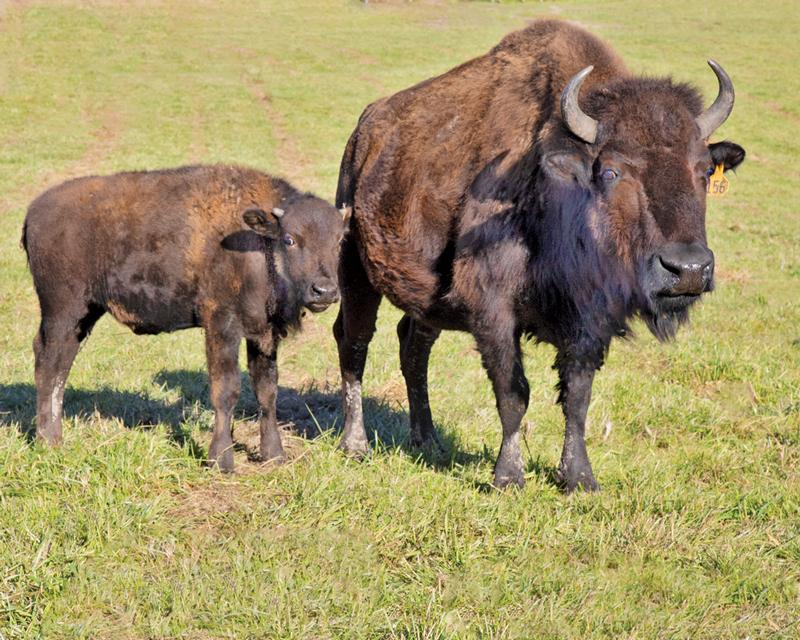We have known since childhood that huge herds of bison–America’s national mammal–once thundered across the Great Plains. But Phil Myers, emeritus curator of mammals at the U-M Museum of Zoology, tells us that these iconic animals were also native to Michigan. Woodland bison may have roamed here as late as the 1790s.
North America’s biggest land animals, bison can weigh up to 2,000 pounds. When they move, it’s like watching a field of one-ton boulders come alive. Anyone can see this spectacle at Domino’s Farms, which hosts a bison herd year-round.
Domino’s Farms’ John Petz, director of real estate and public affairs, and Todd Crocker, herd manager, filled us in. Patz explains that Domino’s started out with two bison and currently has around eighty. To prevent inbreeding, the herd is refreshed every year, with the vast majority of calves being sold off and new bloodlines introduced.
The herd is about half-and-half cows and calves, plus two adult bulls and one bull calf. Once the youngster matures, it will replace one of the adults.
Drivers sometimes get a fleeting glimpse of the herd from northbound U.S.-23 and eastbound M-14, but for a better view visit the Domino’s Farms campus on Earhart Rd. The bison are currently pastured just west of the Prairie House office building. Follow the signage for lobbies C-E, park, and look for bison.
If they’re not in sight, walk north past the parking lots toward the model of the never-built “leaning tower of pizza.” The herd is sometimes spread out in that field or huddled at the base of the tower. If they’re not there either, most likely they’ve roamed to the other side of the hill, where they’re visible only from the freeway. Unfortunately, the timing of this over-the-hill disappearance is not predictable.
We had assumed the bison were at Domino’s Farms primarily as a tourist attraction, but Crocker says they’re a tribute to Michigan’s historic landscape, with Prairie House tenants the primary audience. Visitors are welcome, however; the best time time for bison viewing is between seven and eleven in the morning.
If you do come, keep an eye out for animals going head to head, shoving each other back and forth. Crocker says each bison engages in this test of strength every day. It determines the animals’ position in the herd–the bovine equivalent of chickens’ pecking order.
The birthing season is April through June. Thirty-five or forty new calves are expected this year. Newborns will be up on their feet walking around within fifteen minutes after birth. Wouldn’t that be something to see?
The Bison at Domino’s Farms
One-ton boulders in motion

Credit: Bob & Jorja Feldman


What happens to the bison as they age?